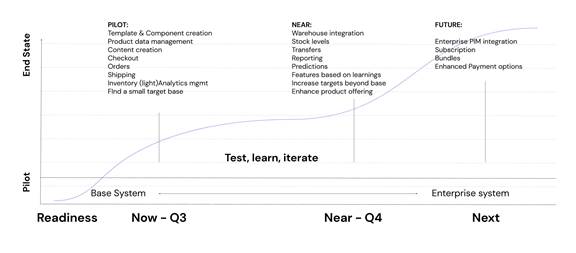As a B2B business you have likely explored a direct to consumer (DTC) proposition. A DTC model is more important now more than ever because the challenges we are having in today’s climate are disrupting our current ways of doing business and we need to be ready to engage customers in the way they want and need to shop.
The fact that prior to the pandemic *87% of consumers preferred to do research directly with the brand or manufacturer and purchase directly from their site is not minor. This insight tells us that there not only is a need for businesses to tap into new ways of working, but also that a demand for the DTC model exists on the consumer side. With this in mind, let us introduce the three steps to getting started on this journey:
- First, assess readiness.
- Then, get real product into market.
- Finally, measure; learn and iterate.

